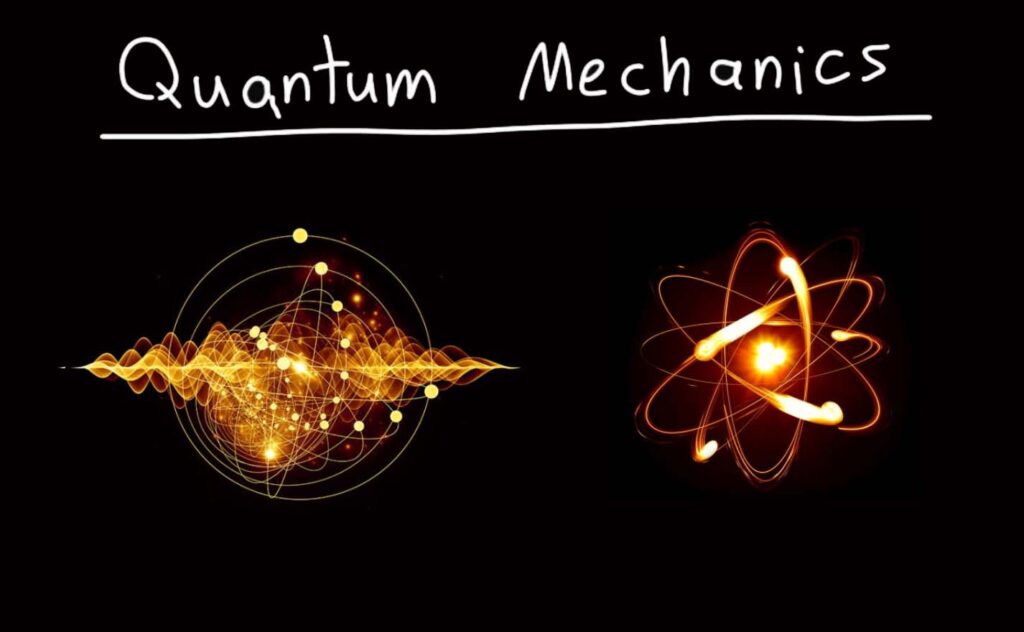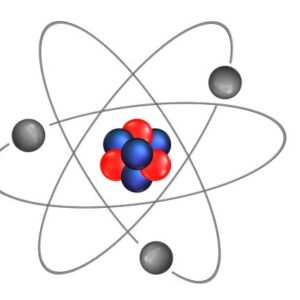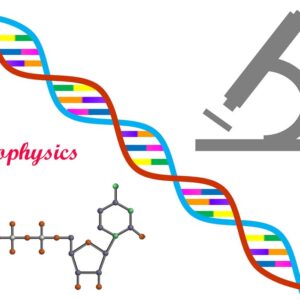
The area of physics known as quantum mechanics studies how matter and energy behave at the atomic and subatomic scales. It is a mathematical framework that explains how particles like protons and electrons behave and interact with energy. Quantum mechanics deals with the properties of matter and energy on a far smaller scale than classical physics which is concerned with macroscopic objects and their behaviour in accordance with classical rules.
Wave-particle duality which holds that things like electrons and photons can behave both like waves and like particles, is one of the fundamental ideas of quantum physics. The well-known double-slit experiment serves as a good example of this idea since it shows how interference patterns are created when light waves and electrons pass through two slits on a screen.
The Heisenberg uncertainty principle which asserts that it is impossible to simultaneously and accurately know a particle’s position and momentum, is another essential aspect of quantum mechanics. This fundamental idea of quantum physics derives from the fact that particles behave like waves.
The Schrödinger equation which explains the temporal development of a quantum system, is a fundamental equation of quantum mechanics. The wave function of a system and how it varies over time are described by a partial differential equation.
The wave function, often referred to as the state function, is used to determine the likelihood of finding a particle in a specific location at a specific time. It comprises all the information about the system.
The study of the characteristics of subatomic particles, such as protons and neutrons and their interactions with energy is also a part of quantum mechanics. It also covers the study of the fundamental natural forces, such as gravity, electromagnetism and the strong and weak nuclear forces.
Overall, quantum mechanics is a difficult and esoteric branch of physics that examines the very small-scale characteristics of matter and energy. It has produced numerous scientific advancements like the construction of transistors, lasers and medical imaging devices in addition to having numerous practical applications in disciplines like electronics, materials science and nuclear physics.
Quantum entanglement which happens when two or more particles become connect in such a way that the properties of one particle are reliant on the properties of the other particle, independent of the distance between them is another key idea in quantum physics. It has been shown in experiments like the Einstein-Podolsky-Rosen (EPR) experiment that this phenomenon which is a fundamental aspect of quantum physics occurs.
The study of quantum field theory, a conceptual framework that explains how particles behave and interact with energy in a field is also a part of quantum mechanics. The behaviour of particles in systems like the electromagnetic field and the strong and weak nuclear forces is described by the quantum field theory.
The Copenhagen interpretation, for example, contends that the act of measurement collapses a particle’s wave function into a particular state and that the wave function only represents the probability of finding a particle in a particular location. Quantum mechanics has many other interpretations as well. According to the many-worlds interpretation, each potential result of a quantum event takes place in a different reality.
Quantum computing or the use of quantum-mechanical phenomena like superposition and entanglement to execute operations on data is a significant area of quantum mechanics. Code breaking and extensive simulations are two examples of challenges that quantum computing has the ability to address significantly more quickly than traditional computers.
Last but not least, quantum mechanics offers a wide range of real-world uses in disciplines like materials science, chemistry, electronics and information technology. It has sparked the creation of technology like lasers, transistors and medical imaging equipment and has the potential to completely alter industries like computing and encryption.
Overall, quantum mechanics is a difficult and esoteric branch of physics that examines the very slight characteristics of matter and energy. It has numerous real-world uses in many different domains such as:
- Quantum chemistry: is the study of chemical systems and processes using the principles of quantum mechanics.
- Quantum electronics: the study of electronic components like transistors and lasers using the principles of quantum mechanics.
- Quantum cryptography: encoding and transmitting data in a way that is impenetrable to eavesdropping by using the principles of quantum mechanics.
- Quantum computing: the processing of data using quantum-mechanical principles. Code breaking and extensive simulations are two examples of challenges that quantum computing has the ability to address significantly more quickly than traditional computers.
- Quantum metrology: using quantum physics to calculate physical quantities like time and distance.
- Quantum optics: is the study of how light behaves at the quantum level and how it interacts with matter. Quantum entanglement, quantum teleportation and quantum imaging are a few examples of the phenomena that are studied in this field.
- Quantum information science: is the study of how quantum mechanical systems can be used to represent, manipulate and process information.
- Quantum field theory: This conceptual framework explains how particles behave and interact with energy in a field. In systems like the electromagnetic field and the strong and weak nuclear forces it is used to describe how particles behave.
Science in the area of quantum mechanics is busy and developing quickly and new findings and applications are being made all the time. Although it is a difficult and abstract science it has greatly influenced our understanding of the cosmos and helped to progress technology.









